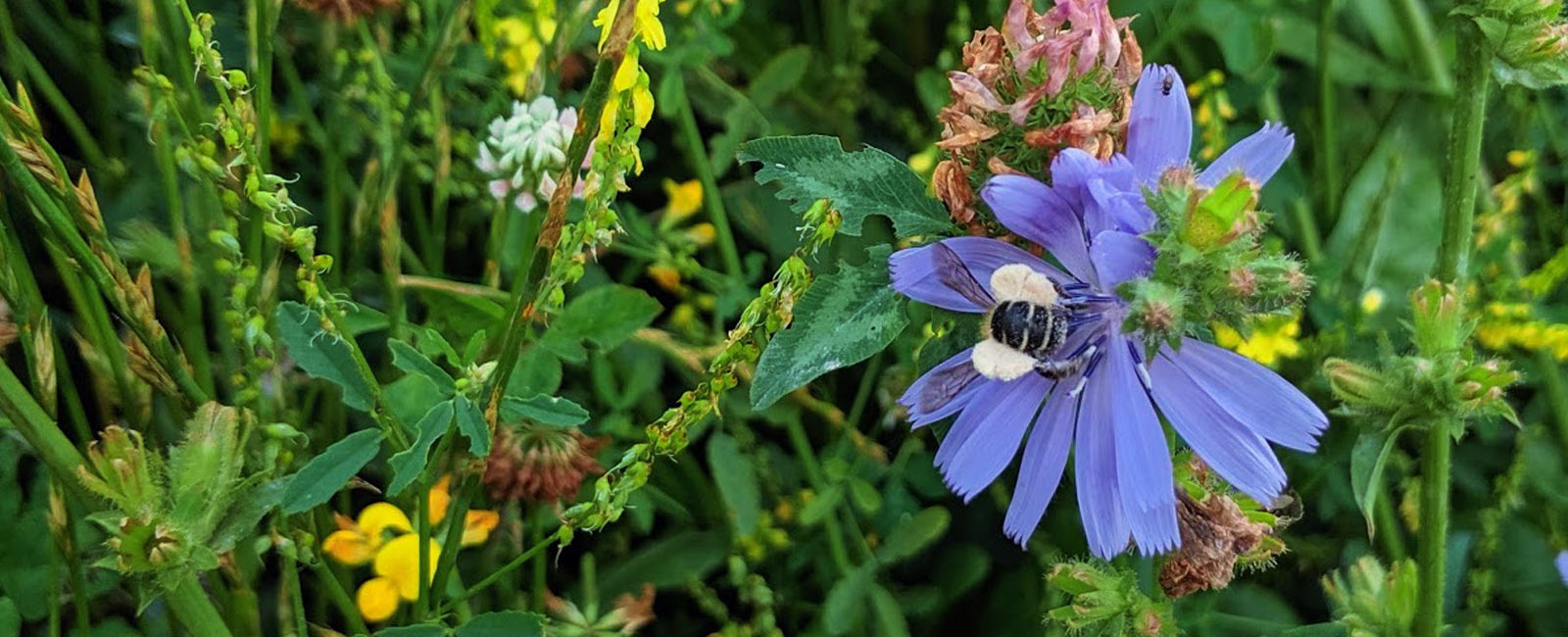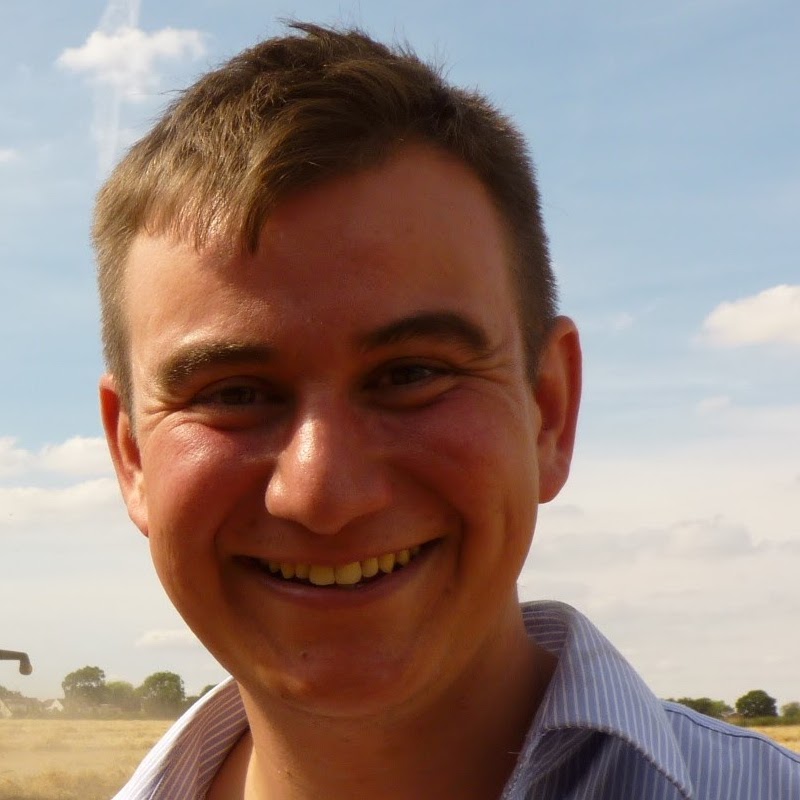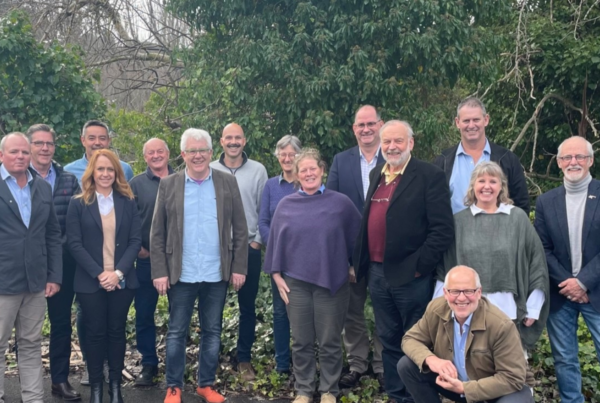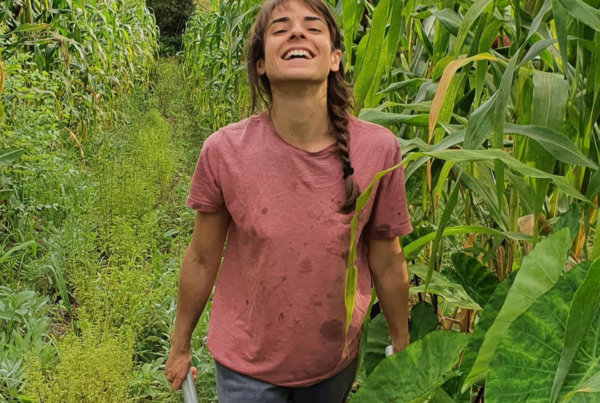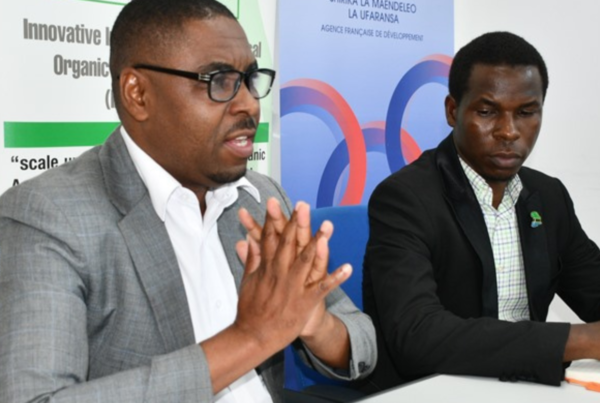I never dreamt of becoming a farmer. Growing up my plans were always to be a film editor or professional jazz musician. However, life had other plans!
Whilst in London in my early twenties, I had a career in banking, earning cash on the side playing music, whilst editing short films in my spare time. When the banking career trajectory stalled, aged 27, I began pondering if I should be doing something else with my life. The lifestyle of farming appealed to me greatly, but still I never imagined that I would actually enjoy farming. At that time, the way my dad farmed was disconnected from growing food, and had little connection to the greater community. It was a job whose role stopped when the commodity grain left the farm gate.
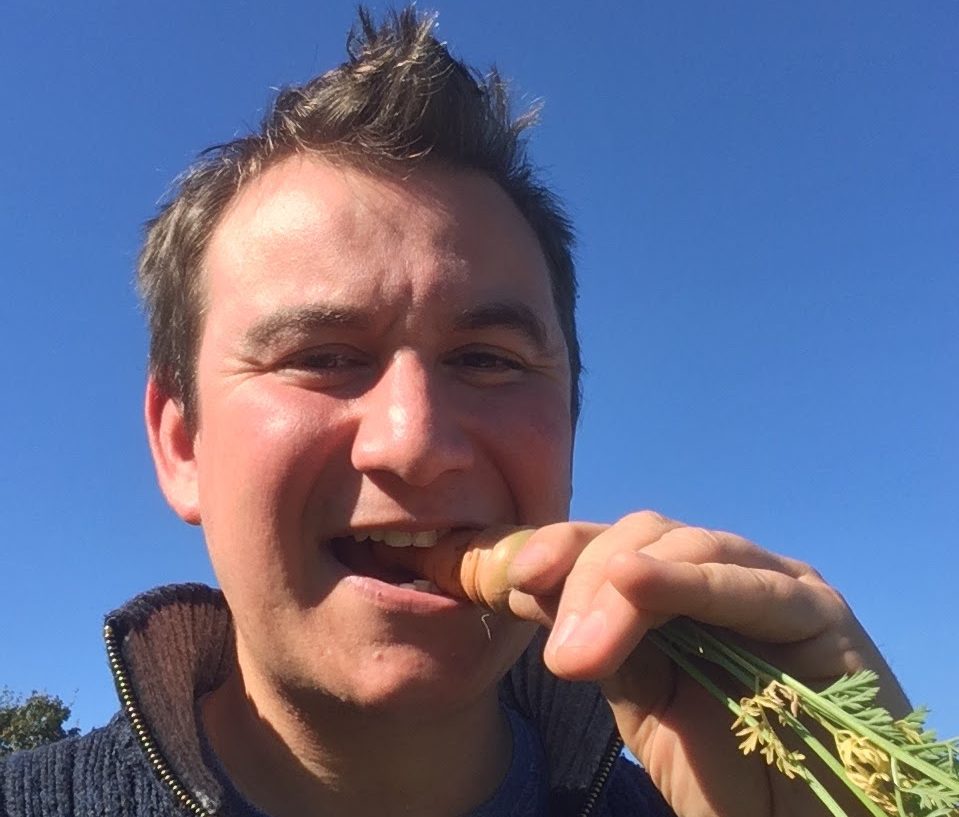
I never imagined that I would actually enjoy farming, but I do! © George Young
However, I still assumed that a farming life would be more rewarding than the somewhat soulless banking job, and made the decision to quit London, moving back to the farm. Before long I began taking the reins and making some significant changes.
The cropping and style of farming was reasonably conventional when I came home. We grew milling wheat, oilseed rape and peas, with some cattle. The livestock primarily remained on permanent rough grazing, and were not a part of the arable rotation. We ploughed rotationally, and operated a min-till method of establishment the rest of the time. Pesticide inputs and fertiliser use were high too, based on the assumed wisdom of their necessity to produce yield.
Not long into my farming career I visited local farmer Simon Cowell, who practiced no-till arable farming. Seeing how successful his system was without the need for any cultivations tipped me over the edge into the rabbit hole, and my whole agricultural mindset shifted to beginning to work with nature as much as possible. This also began my penchant for visiting as many farmers as possible, in the UK and around the world, in order to act like a magpie and “steal” their best ideas to implement on my farm back home.
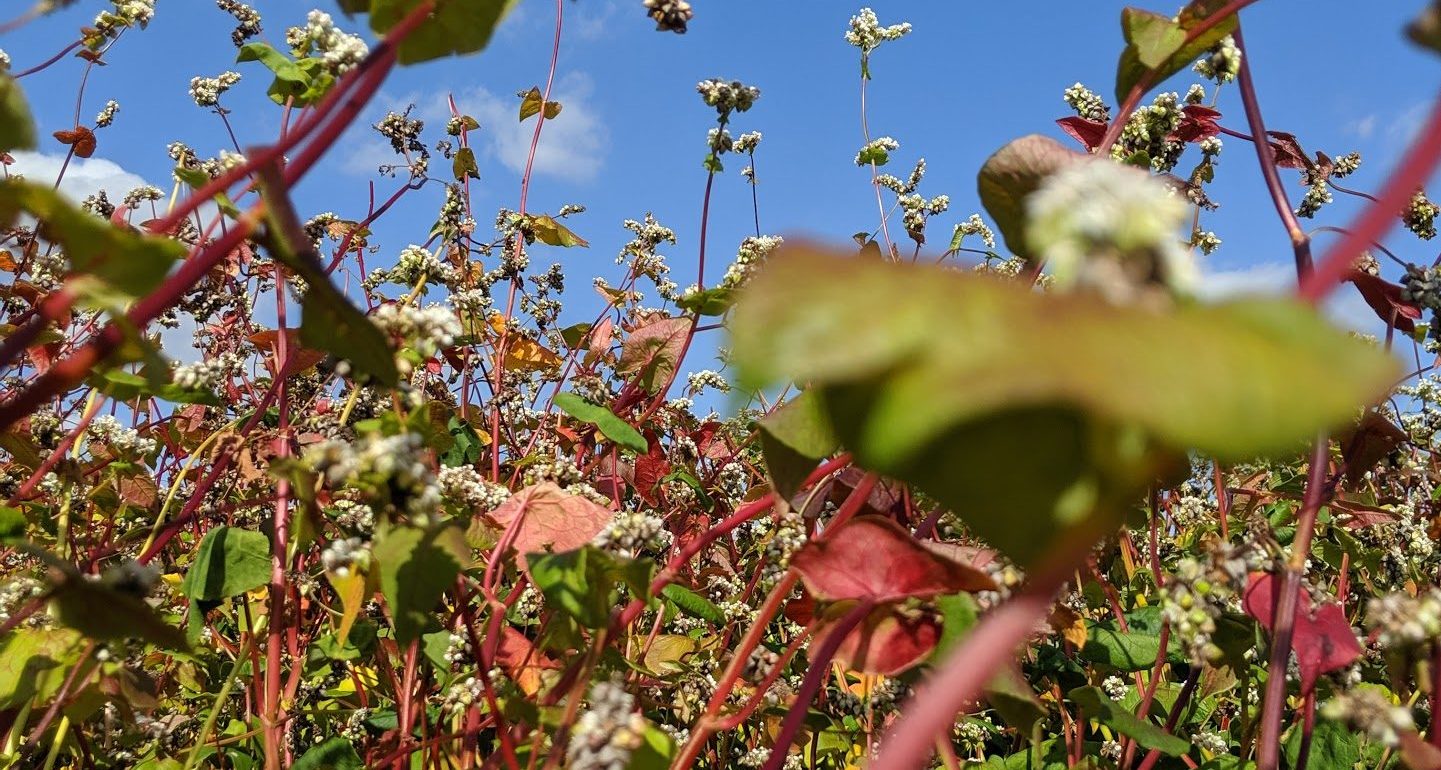
My whole agricultural mindset shifted to beginning to work with nature as much as possible © George Young
I visited conventional farmers, zero-tillage farms, mixed farms, market gardens and orchards – if someone was growing something, I wanted to see how they did it. Interestingly, all the organic farms I visited at this time were rather disappointing, with a dearth of wildlife on the land, which puzzled me. Much as though they were farming without synthetic inputs, they were still failing to farm with nature.
Having stopped tillage six and a half years ago, I stopped using insecticides very soon after, as my focus began to be on building a healthy, functioning ecosystem on my farm. And it wasn’t long before I began to see some biodiversity gains, with increases in mammal and bird life – a sure sign of positive increases in soil life and insects. I had also managed to slash my fertiliser use by 30%, and fungicide use by 50%. However, something was still missing in my farming system. I had an itch I couldn’t quite scratch…
Three years ago, I discovered what it was. Food. Up until that point I had been growing a few crops destined for commodity markets, with no say over where that product would end up, or how it would be processed: whether it would create a nutritional food product, or one full of sugar and salt which in the long term makes the consumer ill. This also coincided with me adding a lot more crops into my rotation: buckwheat, lentils, hemp, heritage cereals, linseed, sunflowers, millet, beans – with their primary destination set as a short supply-chain food product with my name still on the label.
What’s more, I was now able to grow these new crops with virtually no synthetic inputs whatsoever. And the introduction of a more varied rotation combined with my ecological farm focus meant that the wildlife on my farm was now starting to really thrive.
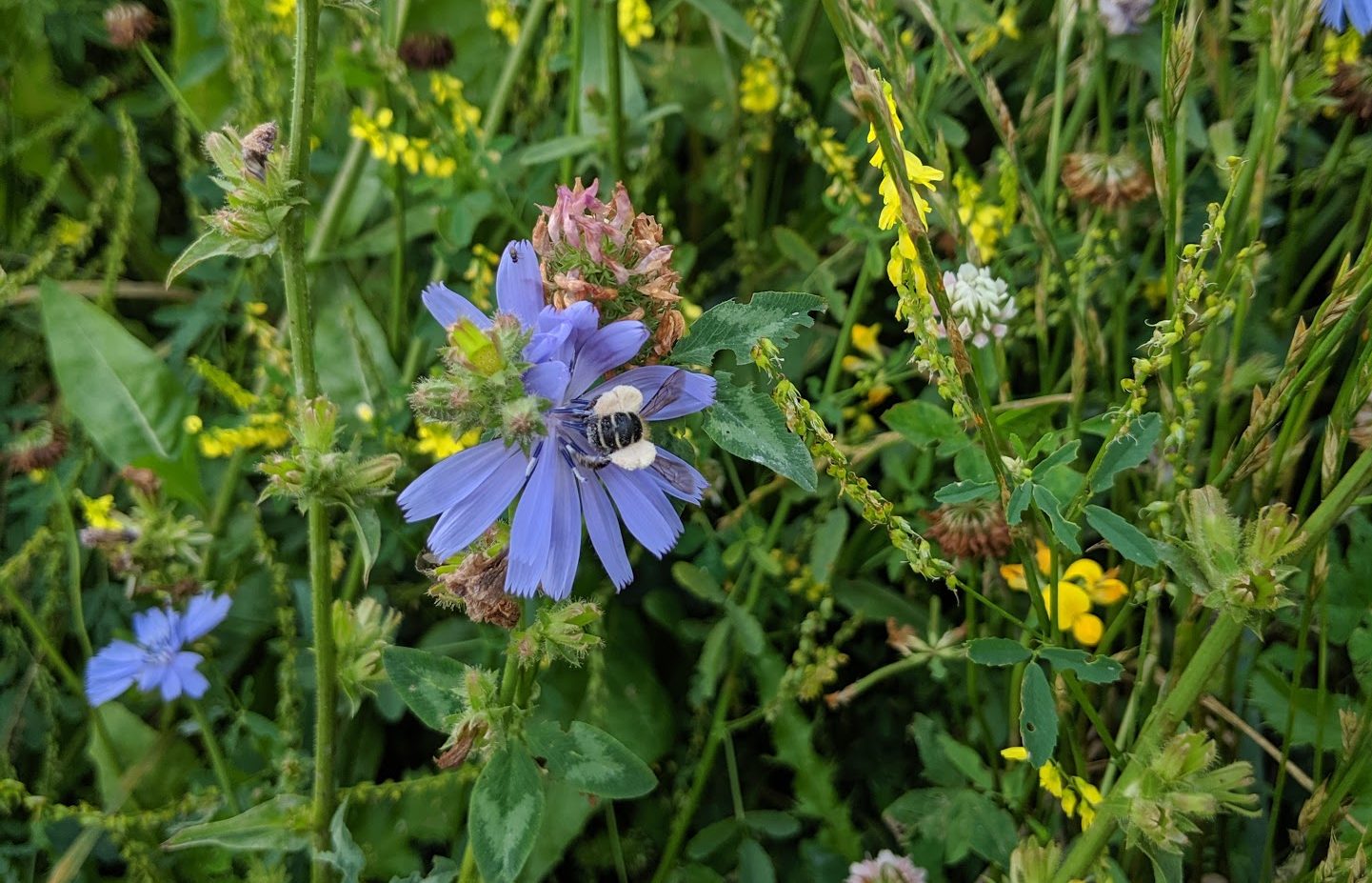
I am establishing a wild seam such that wildlife are always safe to traverse the land © George Young
A very recent decision was to take my input reduction that one stage further, and commit to becoming an organic farmer. Working directly with my customers showed me that they really wanted a fully organic product from me, but I was loath to end up like the ecologically dead organic farms I saw all those years ago. How could I keep the ecological gains made through zero-tillage and significant artificial input reduction?
Thankfully the solution isn’t too tricky, and was cemented on a few farm visits last year: agroforestry, and mixed farming on the arable land. The system of agroforestry I am implementing means that, although some soil will be disturbed most years, about 30% of the soil will remain in permanent organic cover. I am also establishing a wild seam, designed to link every field in my farm, such that wildlife are always safe to traverse the land. Plus, there is the superb benefit that the addition of fruit and nut trees means that the nutritional output of my farm is considerably more varied, and I have even more options as to how I connect to my end consumer.
Figuring out an holistic land management strategy for the farm means that I can proudly convert to organic farming, knowing I am doing my very best for the soil, wildlife, and the people who eat the food that I produce. I am able to be proud of the habitat that I am creating, and love that I can bring people along with me for the ride via blogs and videos. I may not be editing feature films, but it’s funny how some aspects of life always end up coming around full circle.


